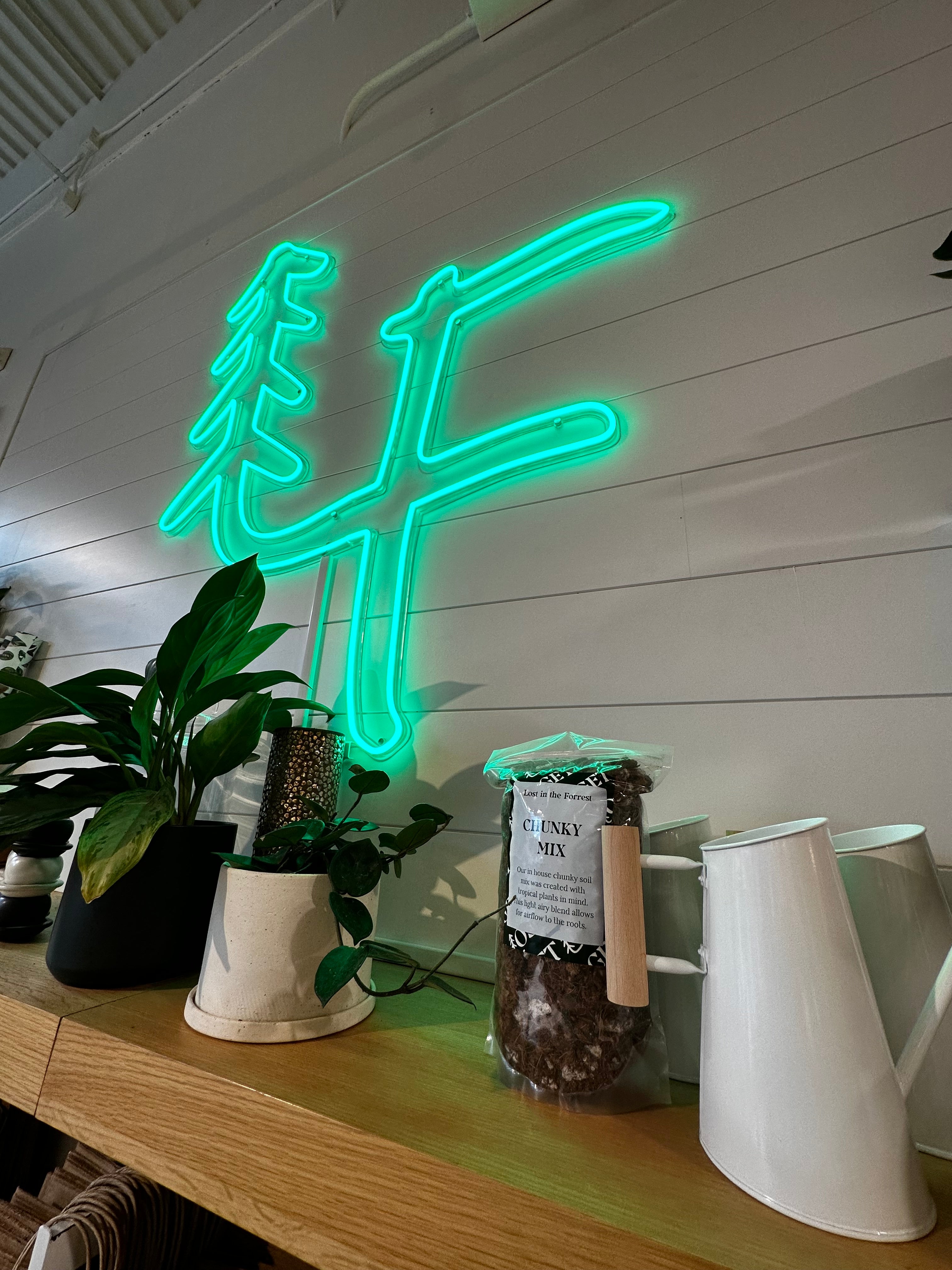As warm summer days transition to crisp fall mornings, we tend to change our routine. We trade in breezy shorts for cozy sweaters. Just like us, our houseplants also need their routine changed to prepare for fall and winter. Here is our care guide!

Bringing your plants inside
While fall days might still be warm, our nights are starting to get colder and colder. When you see leaves turning colors and the temperatures are consistently in the 50s or dip in the 40s, it is officially fall; it’s time to bring your plants inside for the season. As you transition your plants, it is important you treat them for pests to helps prevent any pest issues with your collection.
LITF’s go to preventive spray is easy to make at home!
Here is the recipe:
1 Teaspoon of Neem Oil
1/2 Teaspoon of gentile dish soap
1/2 Quart Water
1/2 Quart isopropyl alcohol (aka rubbing alcohol)
Mix the spray well and fill up a spray bottle. Thoroughly spray your plants, making sure to coat the undersides of each leaf. This may be a tedious task, but it is worth the time!
Pro tip: Please note that this mixture begins to lose its effectiveness after about eight hours, so we recommend making small batches just before your plant care time.

General Care
Just like you swap out the lawn mower for a snow shovel, you’ll need to change up your plant care routine as the seasons change. Often times, plants experience a time of limited growth in the fall and winter. This is a result of receiving less sunlight, which makes plants us to photosynthesize (the process by which plants use sunlight, water, and carbon dioxide to create oxygen and energy in the form of sugar).
LIGHT
To help mitigate the shorter days, you can move your plants closer to a window or get grow lights for supplemental light. You can also leave the plant where it is and acknowledge it’s growth will slow down.
Pro Tip: Just because your plant thrived in one spot over the summer does not mean it will thrive there in the winter. You might have to move plants around during the fall and winter. But try not to move them too often since it can cause stress. After giving your plant a new home, we recommend monitoring for 4-6 weeks before moving it again.
WATER
Because there’s less light and the plants growth rate slows, your plants need less water in the fall. Make sure adjust your watering to respond!
Pro Tip: Always check your plants before watering to help avoid overwatering.
TEMPERATURE
Most tropical house plants like warm, humid conditions - they do not like being cold! Be aware of drafty doors or windows in your home, and keep them away from those areas. Furnaces also tend to dry out homes, so consider adding a humidifier to increase your humidity to help keep your plants happier.
Pro Tip: If you do not want a humidifier in your space, group plants together or on pebble trays with a little water in them. This will help increase the humidity in that area.

Managing Expectations
Different seasons have different affects on us, just like your plants (and sometimes it’s a little unpredictable). Please give yourself some grace as fall and winter approach. In the classroom, Forrest used to tell her students “mistakes are allowed because they help you learn, and grow.” It applies to plant “students” too!
You may get a few yellow leaves, and that is okay.
You may accidentally kill a plant or two, and that is okay.
You may have limited growth, and that is okay.
You may get a pest, and that is okay.
Keep in mind that there are many different factors, so there is not one right or wrong way to care for your plants. Additionally, different plants in your collection might react differently given their unique care needs. Experiment with different care routines over the fall and winter to form your own customized care guide for all your plants.
Thanks for reading, come back next week to see what we are talking about! Until then, GET LOST!
LITF



